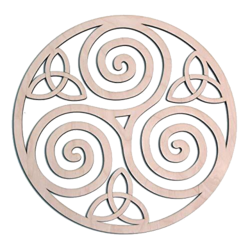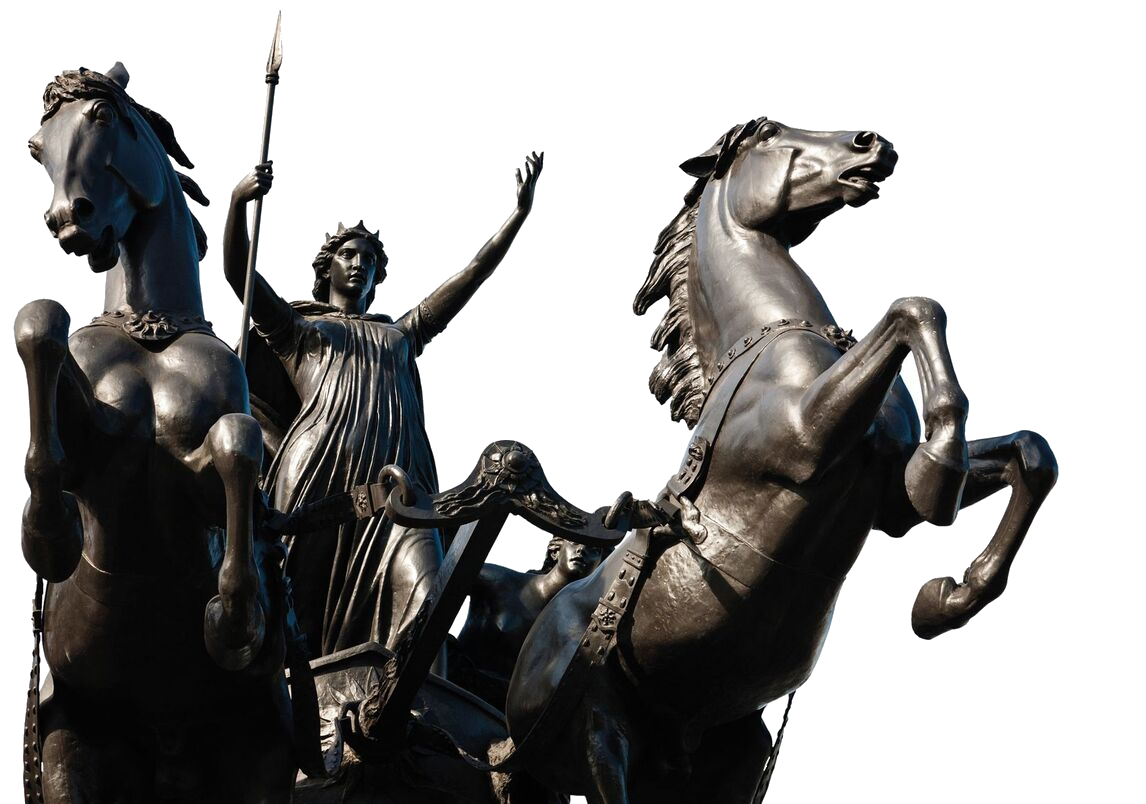BOUDICA

"But now, it is not as a woman descended from noble ancestry, but as one of the people that I am avenging lost freedom, my scourged body, the outraged chastity of my daughters. Roman lust has gone so far that not our very persons, nor even age or virginity, are left unpolluted. But heaven is on the side of a righteous vengeance...If you weigh well the strength of the armies, and the causes of the war, you will see that in this battle you must conquer or die.
This is a woman's resolve; as for men, they may live and be slaves."
- Boudica

Queen
In first century Britania, alongside her husband, King Prasutagus, Boudica ruled the Iceni, a British Celtic tribe whose lands were located in the areas of present-day Suffolk and Norfolk. The Iceni where independent allies of Rome seeking nothing more than to live freely and in peace.
Mother
Queen Boudica and King Prasutagus had two daughters, their names lost to the ages. When the king died he left the lands of the Iceni jointly to his daughters and the Emperor of Rome in an effort to foster good will between the Empire and his heirs. However, his wishes were ignored. All of their kingdom was annexed by Rome, their young men conscripted into the Roman Armies, their property taken, their people enslaved. When Boudica spoke out against this outrage she was flogged and her daughters raped by Roman soldiers.
Survivor
But Boudica was a survivor. The attrocities visited upon her people, her daughters, herself would not go unpunished. Boudica lifted herself from the ashes of the horrors she'd experienced and summoned the strength and courage necessary to rebel against the tyrant rule of the Roman Empire. The Queen was determined. The Iceni would drive the Roman devils from their lands or die trying.
Warrior
Boudica's army of Celtic warriors fell first on Camulodunum (Colchester), then Londinium (London) and finally Verulamium (St. Albans). The Iceni destroyed everything in their path, burning Londinium to the ground and killing an estimated seventy to eighty thousand people. None were spared. Boudica and her daughters had been shown no mercy and so she gave no quarter.
Folk Hero
Unfortunately, while Boudica's army was focused on Verulamium, the Roman forces were re-grouping. Somewhere in the West Midlands, along the Roman road now known as Watling Street, Boudica and her warriors experienced their final defeat. History is unclear as to how the Iceni Queen met her ultimate demise. Some accounts claim she poisoned herself rather than be captured, others that she fell ill and died, whether from complications of an injury or some disease is unknown. Either way, the Warrior Queen is still seen as a hero by the descendents of Britannia.
Inspiration
But to millions of women around the world, she's more than a myth, more than a legend, and more than a hero. To these women, Boudica is an inspiration. They know, despite her ultimate defeat, Boudica was truly "Victorious". No matter what, she never backed down and she never gave in. The Iceni Queen is proof that no matter how horrifying the traumas we've experienced there is a place inside us, a well of strength from which we can draw to rise from the ashes of our pasts and with a warrior's cry scream "No more! For this I will not stand in silence! I will not be broken! I will not be made a slave by the atrocities visited upon my mind, my body, my soul! I will rise up! I will survive and I will have justice! In this battle I will conquer or die!
And remember:
You Are Not Alone...
We Are Not Alone.
We Are Warriors!